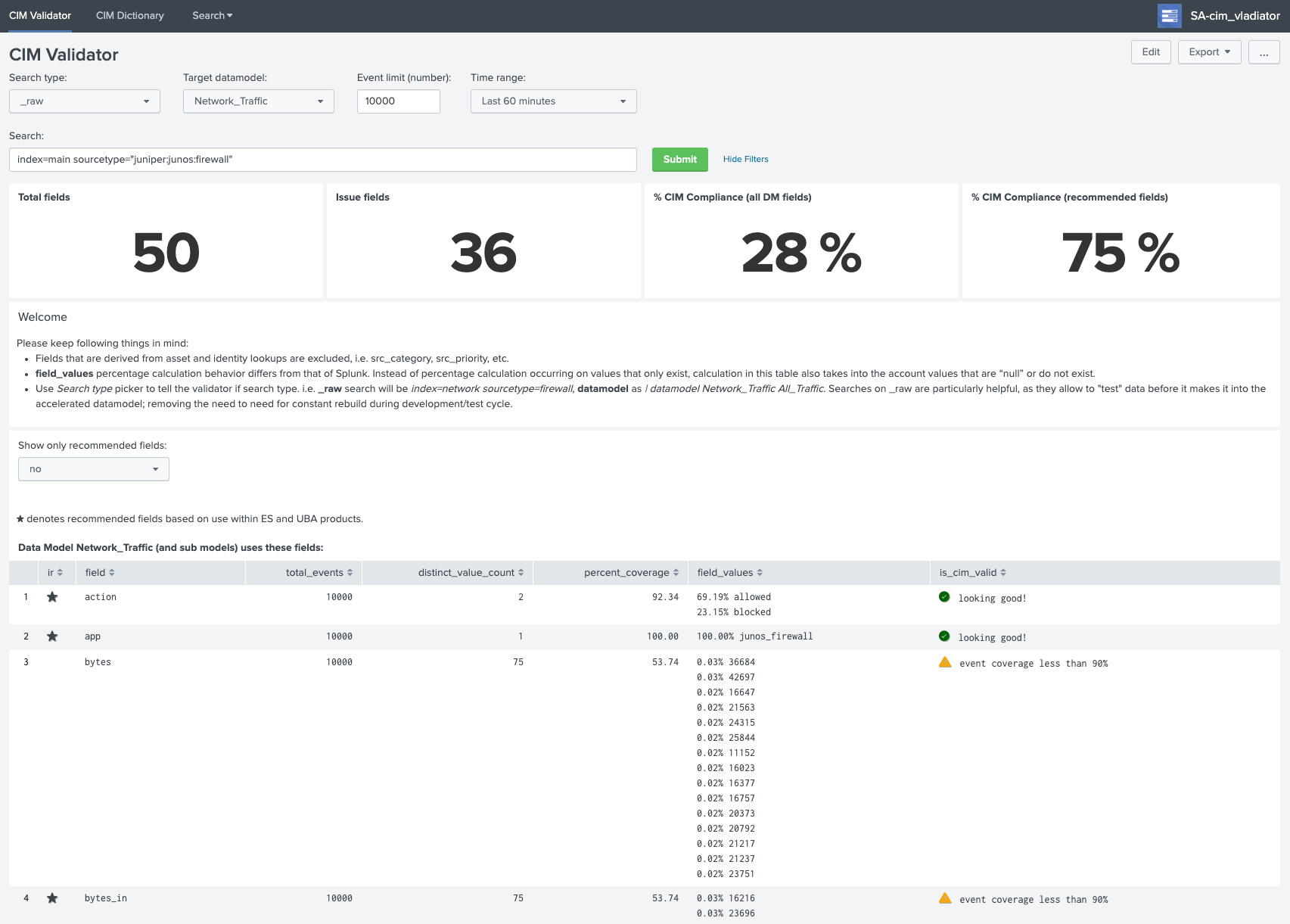

After you have normalized the data from multiple different source s, you can develop reports, correlation searches, and dashboards to present a unified view of a data domain. The CIM acts as a search-time schema ("schema-on-the-fly") to allow you to define relationships in the event data while leaving the raw machine data intact. Why the CIM exists The CIM helps you to normalize your data to match a common standard, using the same field names and event tags for equivalent events from different sources or vendors.

See Approaches to using the CIM for more information about the tools available in the CIM add-on. These tools include a custom command for CIM validation and a common action model, which is the common information model for custom alert actions. The add-on also contains several tools that are intended to make analysis, validation, and alerting easier and more consistent. Preconfigured tags are also available for grouping related field per data model. You can use these data models to normalize and validate data at search time, accelerate key data in searches and dashboards, or create new reports and visualizations with Pivot. Each data model in the CIM consists of a set of field names that define the least common denominator of a domain of interest. The CIM add-on contains a collection of preconfigured data models that you can apply to your data at search time.


The CIM is implemented as an add-on that contains a collection of data models, documentation, and tools that support the consistent, normalized treatment of data for maximum efficiency at search time.
#Splunk cim how to#
All Rights ReservedĢ Table of Contents Introduction.1 Overview of the Splunk Common Information Model.1 Install the Splunk Common Information Model Add-on.4 Set up the Splunk Common Information Model Add-on.5 Release notes for the Splunk Common Information Model Add-on.11 Support and resource links for the Splunk Common Information Model Add-on.14 models.15 How to use the CIM data model reference tables.15 Alerts.19 Application State (deprecated).23 Authentication.26 Certificates.34 Change.42 Change Analysis (deprecated).48 bases.55 Loss Prevention Endpoint.87 Interprocess Messaging Intrusion Detection Inventory Java Virtual Machines (JVM) Malware Network Resolution (DNS) Network Sessions Network Traffic Performance Splunk Audit Logs Ticket Management Updates Vulnerabilities Web Using the Common Information Model Approaches to using the CIM Use the CIM to normalize data at search time Use the CIM to validate your data iģ Table of Contents Using the Common Information Model Use the CIM to create reports and dashboards Use the common action model to build custom alert actions Examples Use the CIM to normalize OSSEC data Use the CIM to normalize CPU performance metrics iiĤ Introduction Overview of the Splunk Common Information Model The Splunk Common Information Model (CIM) is a shared semantic model focused on extracting value from data.
#Splunk cim manual#
I also come up with ways to gather information or perform a scan in a method that isn't currently used in an automated process.1 Splunk Common Information Model Add-on Common Information Model Add-on Manual Generated: 5:14 am Copyright (c) 2019 Splunk Inc. This also means that I am either find a solution or working with the team to implement a solution. This could mean by actively looking for vulnerabilities or systems that are not set up correctly. What does that really mean? I look for ways to help secure our company. I have been privileged to help grow my own children through sports as one of their coaches or their biggest supporter on the sidelines.īy trade I am a security engineer. Most recently I have been the assistant coach and defensive coordinator for a youth football team as well as a grade school soccer coach. I have helped athletes through coaching and mentoring in tee ball, baseball, wrestling, weight training, and shot put and discus in track and field. I have coached athletes as young as pre-kindergarten through high school students. I have been involved in coaching of youth sports. The User Group helps to educate current and potential Splunk customers on ways to fully utilize Splunk. The Splunk User Group has been recognized within Splunk as one of the top user groups in the United States. I am the one of the leaders and the founder of the Splunk user group for the Lincoln/Omaha area, Splunk402.


 0 kommentar(er)
0 kommentar(er)
